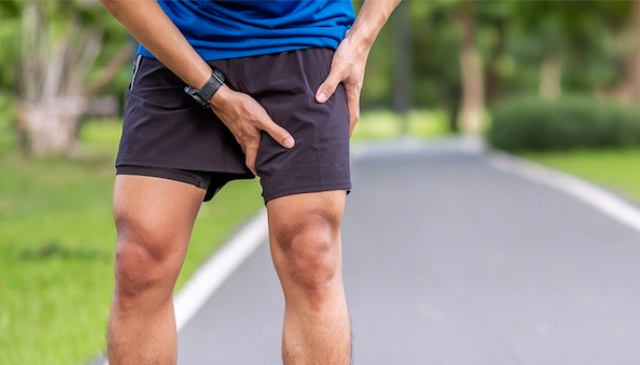News
Hip Strength and Groin Pain: What Athletes Need to Know

Picture this: You're sprinting down the field or court, about to make a game–changing play, when a sharp pain in your groin suddenly stops you in your tracks.
Sound familiar? If you're an athlete, especially in sports like soccer, football, or hockey, you may have experienced groin pain or know someone who's dealt with it, and this common issue can sideline even the most elite performers.
But what if there was a way to predict and prevent this pain before it starts? That's where hip strength comes into play. Recent research has shed light on the crucial role that hip strength–particularly of the adductor muscles on the inner thigh–plays in preventing future groin pain in athletes. As physical therapists, we're excited about these findings because they give us powerful tools to help athletes stay healthy and perform at their best. Let's dive into the latest research and see how it might change the game for athletes.
Recent research explores the connection between hip strength and groin pain
A groundbreaking study called a systematic review and meta–analysis that was recently published has given us valuable insights into the relationship between hip strength and future groin pain in athletes. Here's what you need to know:
Why the study was conducted
- Groin pain is a persistent problem in sports involving quick direction changes and sprinting
- Previous research has hinted at hip strength as a potential risk factor, but the evidence wasn't clear–cut
- This study aimed to provide a comprehensive look at the available evidence to guide prevention strategies
How they did it
- Researchers combed through six major databases, looking for studies that measured hip strength in healthy athletes and then followed them to see who developed groin pain
- They focused on three key measures: hip adduction strength, abduction strength, and the ratio between the two
- The analysis included 13 high–quality studies, mostly involving soccer players but also athletes from rugby, ice hockey, and Gaelic football
What they found
- Athletes with stronger hip adductors were less likely to develop groin pain in the future
- The effect was moderate but significant for both general groin pain and time–loss injuries (those severe enough to keep athletes out of play)
- Interestingly, hip abduction strength and the adduction–to–abduction ratio didn't show a significant relationship with future groin pain
Physical therapy is well positioned to help athletes avoid groin pain
One of the central goals of physical therapy is to help athletes perform at their best and keep their injury risk to a minimum. That's why we are well positioned to assist athletes who might be at risk for groin pain with a personalized prevention program that can translate some of these research findings into practical, on–the–field results. Here's how we can help:
- Strength assessment: using specialized equipment, we can accurately measure your hip adductor strength and compare it to normal data
- Custom exercise programs: based on your assessment, we'll design a program that targets any weaknesses and helps you build the strength you need to stay injury–free
- Technique training: we'll teach you proper form for exercises and sport–specific movements to maximize the benefits of your strengthening program
- Progress monitoring: regular check–ins and reassessments ensure you're on track and making the gains you need to stay healthy
Call us today and keep groin pain at bay
Whether you're a weekend warrior or a professional athlete, investing in your hip strength today could save you from pain and lost playing time tomorrow. At our clinic, we're passionate about helping athletes perform at their best and stay injury–free.
If you're ready to take the next step, contact us today to schedule a comprehensive hip strength assessment and get started on a personalized program to strengthen your groin against future injuries.
For those interested in diving deeper into the research, you can find the full study here.
Disclaimer:
The information in the articles, posts, and newsfeed is intended for informational and educational purposes only and in no way should be taken to be the provision or practice of physical therapy, medical, or professional healthcare advice or services. The information should not be considered complete or exhaustive and should not be used for diagnostic or treatment purposes without first consulting with your physical therapist, occupational therapist, physician or other healthcare provider. The owners of this website accept no responsibility for the misuse of information contained within this website.
